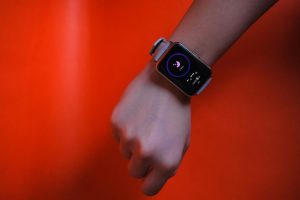How Wearables Are Preventing Sports Injuries
Sports injuries are a major concern for athletes, coaches, and even casual fitness enthusiasts. From sprained ankles to torn ligaments, these injuries can be devastating and even put a halt to one’s athletic pursuits. However, with the advancement of technology, there is a new player in the sports injury prevention game – wearables. These high-tech devices are revolutionizing the way we train, compete, and ultimately, stay injury-free. In this article, we will explore how wearables are making a difference in the world of sports by preventing injuries and keeping athletes at the top of their game.
The Rise of Wearable Technology
Wearable technology has become increasingly popular in recent years, with the global market reaching a staggering $95.3 billion in 2021. These devices come in various forms, from fitness trackers and smartwatches to GPS-enabled shoes and sensor-embedded clothing. Their popularity can be attributed to the growing interest in health and fitness, as well as the advancements in technology that have made these devices more accurate and accessible.
But what sets wearables apart from traditional sports gear? Unlike traditional equipment, wearables provide real-time data and feedback, allowing athletes to track their performance, make informed decisions, and prevent injuries. Let’s take a closer look at how these gadgets are doing just that in the world of sports.
Preventing Overexertion
One of the leading causes of sports injuries is overexertion. When pushing their limits, athletes are at a higher risk of strains, sprains, and other types of injuries. Luckily, wearables can help prevent this by monitoring an athlete’s heart rate, breathing rate, and body temperature. By keeping an eye on these key indicators, wearables can alert athletes when they are pushing themselves too hard, allowing them to make the necessary adjustments and avoid potential injuries.
Improving Technique and Form
Proper technique and form are vital for athletes to perform at their best and prevent injuries. However, it can be challenging to monitor one’s form while in the heat of the game or during intense training sessions. That’s where wearables come in. Some devices, such as smart shirts and leggings, are equipped with sensors that can track an athlete’s movements and provide real-time feedback on their technique. By making the necessary adjustments based on this feedback, athletes can improve their form and reduce the risk of injury.
Safeguarding Against Impact Injuries
Impact injuries, such as concussions, are a significant concern in contact sports. However, with the help of wearables, athletes and coaches can now monitor the intensity of impacts and detect signs of potential injuries. Some helmets now come equipped with sensors that can measure the force of an impact and send an alert if it reaches dangerous levels. This allows athletes to seek medical attention and prevent further harm before it’s too late.
Detecting Imbalances and Asymmetries
Imbalances and asymmetries in the body can lead to overcompensation, which can result in injuries. However, these issues can often go undetected until it’s too late. Wearables can help address this by monitoring an athlete’s movements and detecting any imbalances or asymmetries. By identifying these issues early on, athletes can make the necessary adjustments and prevent injuries from occurring.
Conclusion
In today’s fast-paced world, athletes and coaches are constantly seeking ways to improve performance and prevent injuries. Wearable technology has proved to be a game-changer in this regard, providing real-time data and feedback that can help athletes stay injury-free and perform at their best. With continued advancements, we can expect wearables to play an even more significant role in preventing sports injuries in the years to come.
Are you an athlete or coach who has experienced the benefits of wearable technology in preventing injuries? Share your thoughts and experiences in the comments below!











